Lance Pearce – 12 November, 2014
The gallery is dimly lit, points of light radiate from small, eye-level light bulbs that form part of five ingenious DIY lamp-table sculptures, brightening nearby framed text pieces. The glows from two backlit print-boxes illuminate the dark corners, this subtle luminescence providing a counterpart to the brightness of the videos on display - one large wall projection, three flat-screen monitors. The seduction of light and dark that is innate to cinema is transposed into the exhibition setting.
Auckland
Tahi Moore, John Skoog
John Skoog, Tahi Moore
21 October - 15 November 2014
‘I guess everything’s irrelative’
Suburban Lawns, ‘Janitor’ (1981)
John Skoog‘s video Reduit (Redoubt) (2014) is projected onto the wall in the smaller gallery. Set in rural Sweden, Reduit (Redoubt) uses a roving camera and narrative to present a study of the Söderto farmer Karl-Göran Persson and his architectural project. Beginning in the 1940s, when Sweden feared a cold war Soviet invasion, Persson began to reinforce his farmhouse with scrap metal mixed in concrete and plastered onto the building’s walls, producing a fortification for his family and community. Persson’s building project continued until his death in 1975.
Opening with a close up of a ragged ceiling, the camera begins a slow circling of the farmhouse in an elaborately choreographed, extended tracking shot. The camera gracefully documents the massive building, revealing both the immensities and particulars of its metal-studded, crumbling concrete walls, examining it from all sides and angles. Mostly, Skoog’s camera is pointed directly at the walls, never more than a few feet away, producing a claustrophobic yet mesmerising viewing experience.
Meanwhile, six people in voice-over retell individual accounts of Persson, based on interviews the artist carried out with local residents. The recollections evoke Persson’s solitary, determined personality, his obsessive work stemming from a deep-seated anxiety. Skoog’s film seamlessly combines past and present. His boldly mobile camera confidently expands cinematic space and time while evoking a melancholy yet beautiful sense of place, the roving camera finally opening toward the wintry, desolate rural landscape.
Entering the darkened space containing Tahi Moore‘s show Events vs their narratives, viewers slowly acclimatise to works positioned either on or near the walls. The gallery is dimly lit, points of light radiate from small, eye-level light bulbs that form part of five ingenious DIY lamp-table sculptures, brightening nearby framed text pieces. The glows from two backlit print-boxes illuminate the dark corners, this subtle luminescence providing a counterpart to the brightness of the videos on display - one large wall projection, three flat-screen monitors. The seduction of light and dark that is innate to cinema is transposed into the exhibition setting.
Moore’s subtitled videos map a relationship between certain mental processes - mostly, examining meaning - and spatial locations that shift between local recreational and domestic settings. Filmed outdoors, Tunnels (all works 2014) offers images of darkened tunnels, hilltop views, and stairs flirting with the sea for the viewer’s consideration, accompanied by the artist’s textual phrases as subtitles that position subjectivity as an object of inquiry, rather than a taken-for-granted condition. To be human, Moore reminds us, is to continually labour in language: to interpret signs, follow narratives, explain things, and to leave a digital trail. His phrases address the impossible shortcomings of language when confronted with lived experience; the messy gap between sign and referent, thought and behaviour, representation and action: ‘A person supposed to know […] Something about to happen […] He thinks he’s who he imagines himself to be […] The imagined exact repetition of that event‘.
In one shot, Moore is seen walking backwards up a hill not simply to put himself in the picture, but in exactly the right place - bringing to mind a shot in Michelangelo Antonioni’s L’eclisse (1962), wherein Monica Vitti backs away from Francisco Rabal into precise alignment with a mirror. Less graceful than Vitti, Moore slips and falls. His loss of balance is, of course, a weak analogue for the slippery semiotic slope. Moore knows - surely knows - that this is a dreadful cliché. Revisiting well-worn meanings is part of his method. His fall is deliberately humorous, albeit in an extremely dry, almost imperceptible sense.
Beginning with an image of stairs descending into the sea, the camera in Beta Minus slowly backs away, the video ends with shots of a man walking amidst the chicanes and manicured lawns of the Viaduct Harbour residential area; a circuit from sea to shining sea. In between, the camera passes over the surface of people and things: young people chatting in a sunlit lounge, a bottle of water, a man and woman inspecting a red pill before bouncing it off camera, music electronic equipment, and stock footage of a lecture. The textual free associations in Beta Minus readily elude the grasp of the viewer who, on first viewing at least, is stretched to apprehend everything that is on screen. The difficulty resides in the speed and digression of the references and the oblique images: ‘Failed attempt to remake the film Alphaville […] Locations lie even if they’re physically there […] Direct connections at a distance […] John Bell’s theorem […] Leonard Susskind […] the universe may be a hologram […] Robert Redford’s practice run at the top of a cliff face’.
This play with language is comparable to the method of French filmmaker and writer Alain Robbe-Grillet, whose novel The Voyeur (1955) is packed with sharply detailed descriptions of the ‘everyday world’, but, crucially, breaks from narrative convention, instead offering: paper-thin characters, missing plot details, and contradictory narrative developments (sometimes within the same sentence). According to Robbe-Grillet, the novel, and indeed all art, is autonomous and ‘expresses nothing but itself’. Much like the work of Robbe-Grillet, Moore’s art reminds us that all narratives, whether fiction or non-fiction, are constructions, are opinions or conjecture that we would be wise not to accept uncritically.
Lance Pearce
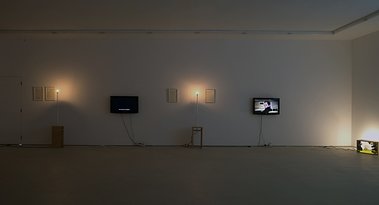
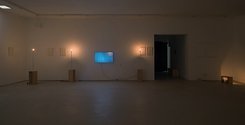

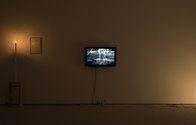
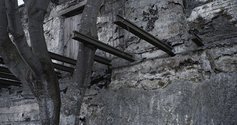

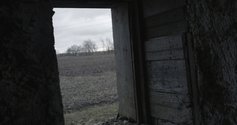
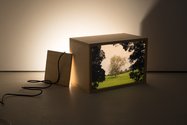
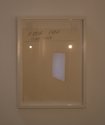
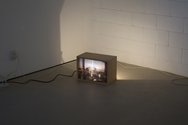
 Advertising in this column
Advertising in this column Two Rooms presents a program of residencies and projects
Two Rooms presents a program of residencies and projects
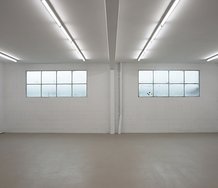
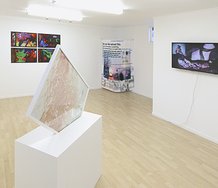
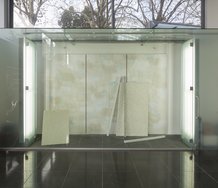
This Discussion has 0 comments.
Comment
Participate
Register to Participate.
Sign in
Sign in to an existing account.